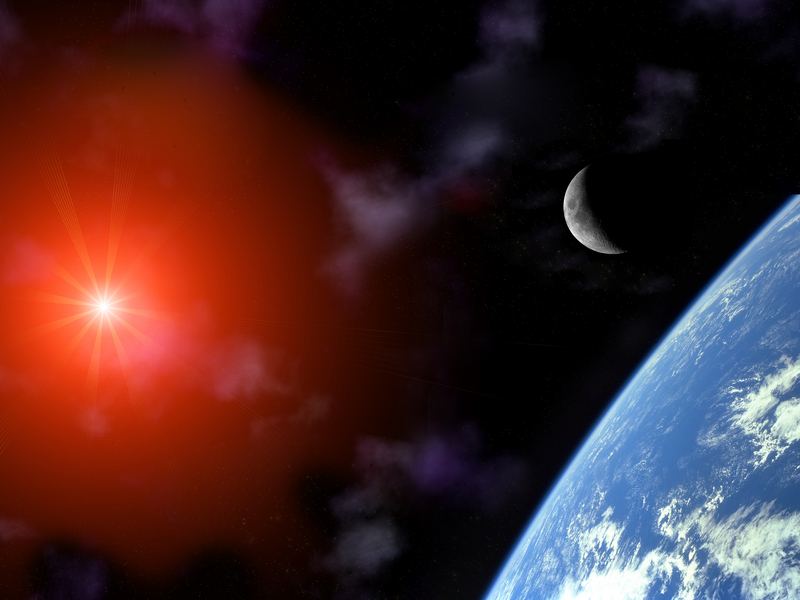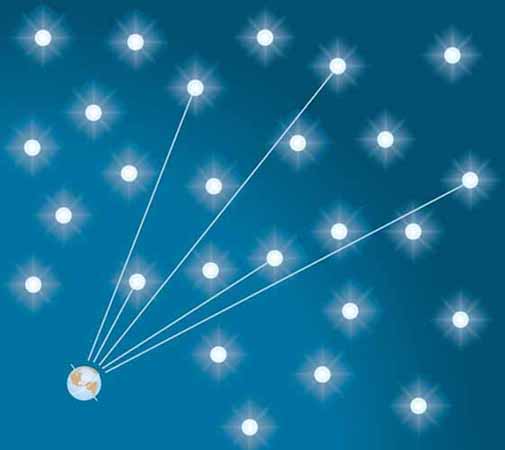 It seems obvious at first, the night sky is dark because there is an absence of light. There is an absence of light because the Sun has moved behind the Earth from our perspective as part of the daily rotation of the Earth about its axis. Simple. So why am I asking this question? Well, as you may have guessed, the answer is not as simple as it may at first seem.
It seems obvious at first, the night sky is dark because there is an absence of light. There is an absence of light because the Sun has moved behind the Earth from our perspective as part of the daily rotation of the Earth about its axis. Simple. So why am I asking this question? Well, as you may have guessed, the answer is not as simple as it may at first seem.
We have different understandings or thoughts on the universe, we call these models. Albert Einstein was among those who believed in a static model, one that states that we occupy a static universe, that is to say that it is neither expanding nor contracting, rather that it is infinite and eternal.
If we are to assume this to be true, and also assume that stars are evenly distributed around the universe, then we are still left with our question: “Why is the night sky dark?”. This is known as ‘Olbers’ Paradox’. Why are we left with this question? Read on!
In an infinite universe where there is even distribution of stars it should not be possible for us to see a dark night sky. Instead we should observe a sky illuminated by all of the other stars in our galaxy and beyond. It makes sense to think that the absence of our Sun (a star, of course) should not lead to darkness when there are so many other stars casting light in Earth’s direction.
“Our own Milky Way galaxy contains over 200 billion stars, and the entire universe probably contains over 100 billion galaxies. You might suppose that that many stars would light up the night like daytime!” – The Space Place.
If the Earth is sat in space amongst infinite space and stars, when an individual looks out up to the sky on a clear night there ought to be no chance of them seeing darkness, the space between stars. It should not be possible for there to be an area of space that does not have a star occupying it, as we perceive. This is simple probability. Inifinite space, infinite stars, total coverage of the night sky…surely!
Imagine you are in a forest, it is a small forest with a few trees. You look around and between the trunks of the trees you see light. Now imagine a different setting, still in a forest, but this time an infinite forest with infinite trees, evenly distributed. You cannot look anywhere without your line of sight being blocked by a tree trunk at some point, blocking your view of the light behind them. To you it appears as if there is no light, just trees. This is similar to our situation with the night sky, trees represent stars and the size of the forest represents the size of the universe.
So why is it that we do not see all these stars if they are there? Some argue that due to the sheer distances involved, the light from a star is reduced so much that it becomes undetectable to the human eye by the time it reaches Earth…almost as if it is not there at all. Not so. Picture the Earth surrounded by concentric layers of stars. The inner layers contain less stars than the outer layers, which contain progressively more stars. We should expect to see equal light coming to Earth from each layer, because although the outer layers contain more stars, the light intensity is reduced with distance which should balance out the fact that there are more stars in outer layers, so it cannot be down to distance. The Inverse Square Law show us that light intensity decreases by 1/d^2 where d = distance.
These images from How Stuff Works should help to explain this point.

If Star Layer A is twice as far from Earth as Star Layer B, then the amount of light that reaches us from each star in A is only one-fourth the amount of light that reaches us from each star in B; but there are four times as many stars in A as there are in B.

If the distance between A and B is 2 units, then each square in A is one-fourth as bright as each square in B; but there are four times as many squares in A as there are in B.
Another possible explanation is space dust or debris obstructing the light and stopping it from reaching Earth. this does not stand up to scrutiny either, however, as any such particles would heat up as they absorbed the light and would eventually glow as bright as the stars themselves due to the sheer amount of energy they had absorbed. So why the darkness?
 There are two main theories on why we experience a night sky that is so black and empty. The first is expansion. This theory states that the universe is expanding, and this can be seen through Red Shift. If the universe expands then the distances between stars and planets such as Earth will increase, leading to a reduction in light reaching Earth and this could account for the ‘black spots’ in the night sky. they could be areas where the expansion of the universe has resulted in the stars being too far from us for us to observe a notable amount of light.
There are two main theories on why we experience a night sky that is so black and empty. The first is expansion. This theory states that the universe is expanding, and this can be seen through Red Shift. If the universe expands then the distances between stars and planets such as Earth will increase, leading to a reduction in light reaching Earth and this could account for the ‘black spots’ in the night sky. they could be areas where the expansion of the universe has resulted in the stars being too far from us for us to observe a notable amount of light.
The other, more popular theory is that the universe is not infinite at all. Rather that the universe is finite in both size and age. It was created about 13.7 billion years ago in an event known as the Big Bang. The universe began as a single point and has been expanding ever since. The universe is not infinitely old. “If it were, the sky would in fact be infinitely bright, because light from every point in the universe would have had time (eternity) to travel to every other point. As far as we know, there is no edge of the universe, only an edge of time. The finite age of the universe limits how much light we see.” – How Stuff Works.

Another reason the night sky is mostly dark has to do with our eyes’ insensitivity to the wavelengths of light that reach the Earth from the most distant stars.